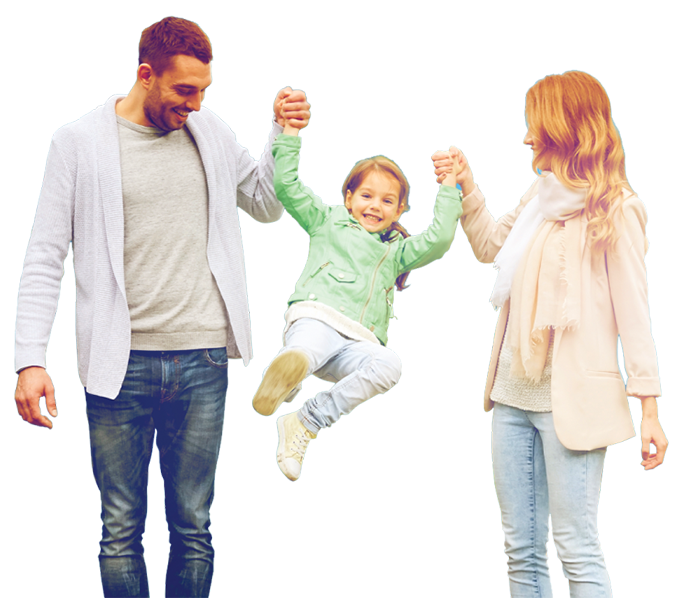When a child is diagnosed with Leg Length Discrepancy (LLD), which means that one leg is shorter than the other, it can be a source of concern and stress for parents.1 If the difference in leg length affects the child’s daily life, and in particular their walking pattern, treatment may be required. For mild LLD, non-surgical options such as shoe lifts or specially designed footwear may provide a solution.2 However, for more severe cases, surgical correction may be recommended to either slow down the long leg and grow the shorter leg. Modern technology involving implanting a motorized intramedullary limb lengthening device, has made the ability for surgeons to grow legs longer much easier and safer for children. But it requires an experienced orthopedic surgeon and collaboration from a multi-disciplinary team.2 Regardless of the treatment chosen, it is important for families to understand the potential long-term outlook and implications of LLD correction.
Learn more about LLD and treatment options.
Potential Long-Term Effects
If a child’s leg length discrepancy is minimal, there may be a tendency to not treat it at all, especially if the child does not demonstrate any walking difficulty.3,4 However, research shows that even mild discrepancies of 2cm can contribute to muscle imbalances, joint pain, and even posture-related issues over time.2,3 In severe cases, untreated LLD can affect overall skeletal alignment, leading to problems such as back pain, abnormal gait, and degenerative joint disease of the hips, knees, and spine.
A child’s LLD will likely change over time, and they may require monitoring their entire growing years. In severe cases, children may necessitate lengthy treatment plans and/or several interventions. A child who is too young for surgery may be treated conservatively (with a shoe lift, for example) until they are old enough for surgery.
A successful LLD treatment involves not only the equalization of leg length, but also the correction of the walking pattern, and joint alignment.5,6
Monitoring and Follow-Up
Regardless of the type of treatment, regular follow-up appointments with a pediatric orthopedic specialist are vital. These visits are designed to monitor progress, address any concerns, and ensure the child’s gait and posture are normalizing. If the child received conservative treatment, such as a prescribed shoe lift or specially designed footwear, the regular follow-up consultations will assess if the treatment is having a positive result in the walking pattern and if the LLD has increased as they grow.
For those who undergo surgical interventions, physical rehabilitation plays a significant role in long-term success. Post-surgery physical therapy helps to restore muscle strength, endurance, and balance. Even after formal rehabilitation concludes, ongoing home exercises and physical activity are usually encouraged to maintain the benefits of treatment and prevent future complications.5,6
Success Stories
Many families find hope and motivation in hearing about successful LLD treatment outcomes. With the right medical care, children who undergo limb lengthening surgery or other corrective treatments can successfully overcome the difficulties posed by LLD.7,8 Many become involved in sports and physical activities without any limitations. The Patient Stories section on this site provides several heartwarming success stories, including Jadon’s Story, which highlights the transformative impact of intramedullary limb lengthening for a 16 year old boy whose wish was to return to playing soccer.
Conclusion
While the journey through leg length discrepancy treatment may seem daunting, parents can be reassured by the positive long-term outlook. With advancements in LLD surgical techniques and continuous monitoring, most children can achieve functional leg length equality and live active, pain-free lives.
By staying informed, engaging with the orthopedic team, and following through with prescribed care, parents can ensure the best chances for their child to have a bright, healthy future ahead.
References
- Hartley J. Chapter 13 – Orthopaedic conditions. In: Pountney T, ed. Physiotherapy for Children. Butterworth-Heinemann; 2007:199-218.
- Parvizi J, Kim GK. Chapter 177 – Pediatric Leg-Length Discrepancy. In: Parvizi J, Kim GK, eds. High Yield Orthopaedics. W.B. Saunders; 2010:367-369.
- Roye BD. CHAPTER 16 – Orthopedics. In: Polin RA, Ditmar MF, eds. Pediatric Secrets (Fifth Edition). Mosby; 2011:614-647.
- Wynes J, Schupp A. Assessment of Pediatric Limb Length Inequality. Clinics in Podiatric Medicine and Surgery. 2022/01/01/ 2022;39(1):113-127. doi:https://doi.org/10.1016/j.cpm.2021.09.004
- Ennis E. Chapter 25 – Pediatric Orthopaedic Physical Therapy. In: Placzek JD, Boyce DA, eds. Orthopaedic Physical Therapy Secrets (Third Edition). Elsevier; 2017:220-230.
- Lin YF, Lin DH, Jan MH, Lin CHJ, Cheng CK. 10.20 – Orthopedic Physical Therapy. In: Brahme A, ed. Comprehensive Biomedical Physics. Elsevier; 2014:379-400.
- Dahl MT. Limb Length Discrepancy. Pediatric Clinics of North America. 1996/08/01/ 1996;43(4):849-866. doi:https://doi.org/10.1016/S0031-3955(05)70438-7
- Vogt B, Gosheger G, Wirth T, Horn J, Rödl R. Leg Length Discrepancy- Treatment Indications and Strategies. Dtsch Arztebl Int. Jun 12 2020;117(24):405-411. doi:10.3238/arztebl.2020.0405
 Share on facebook
Share on facebook
 Share on twitter
Share on twitter
 Share on linkedin
Share on linkedin
 Share on email
Share on email

